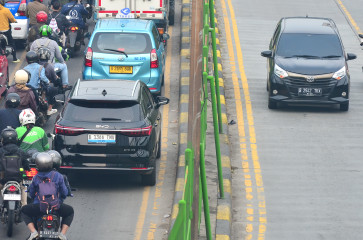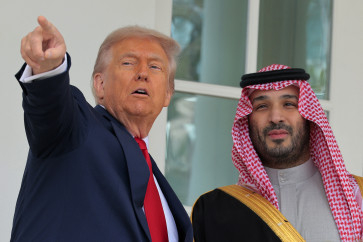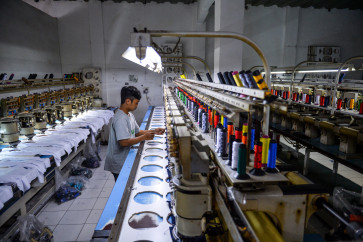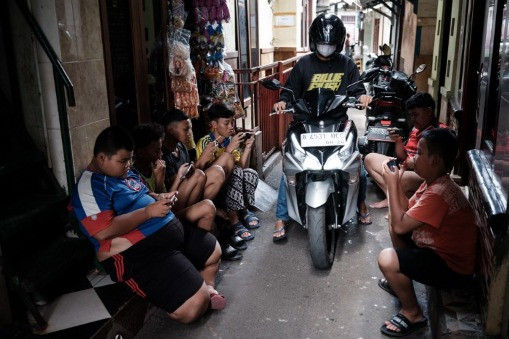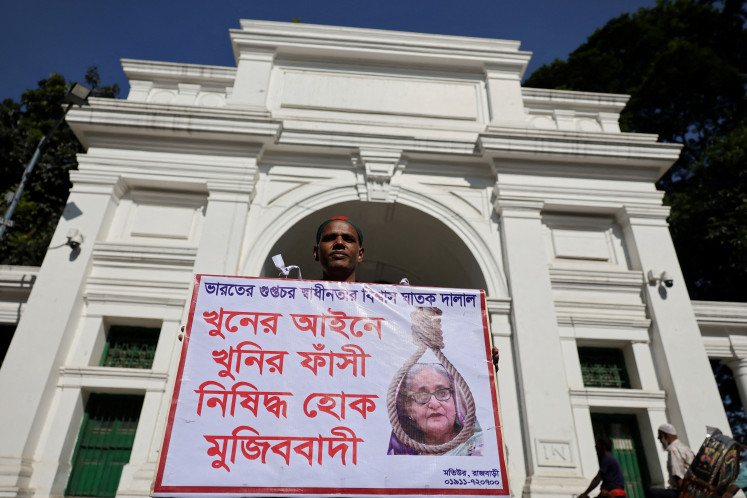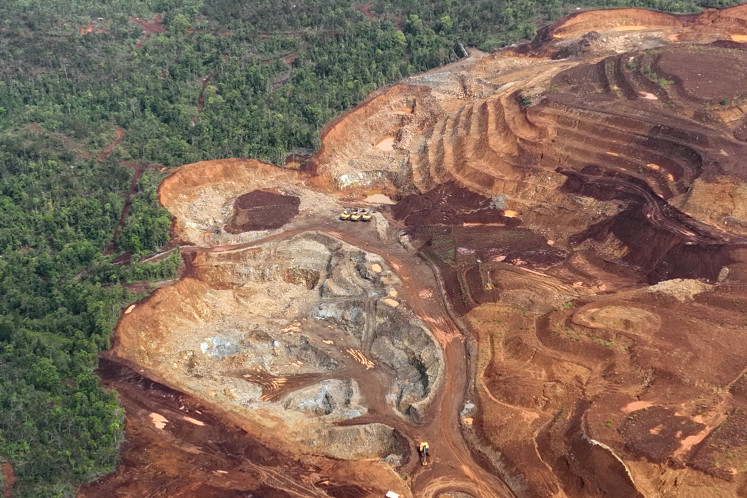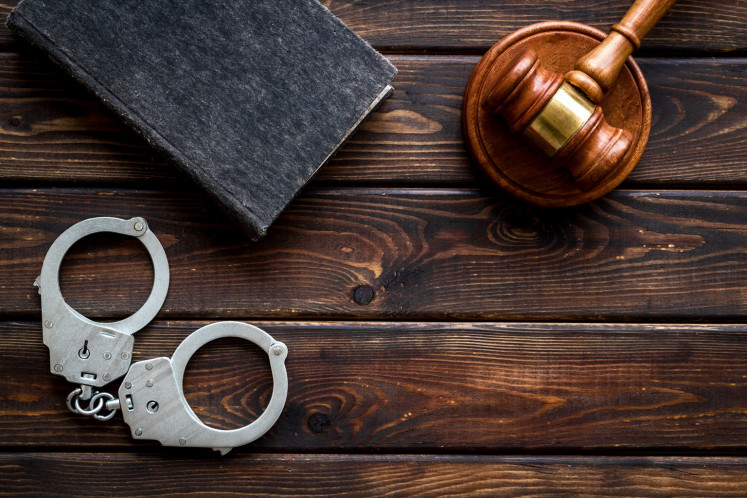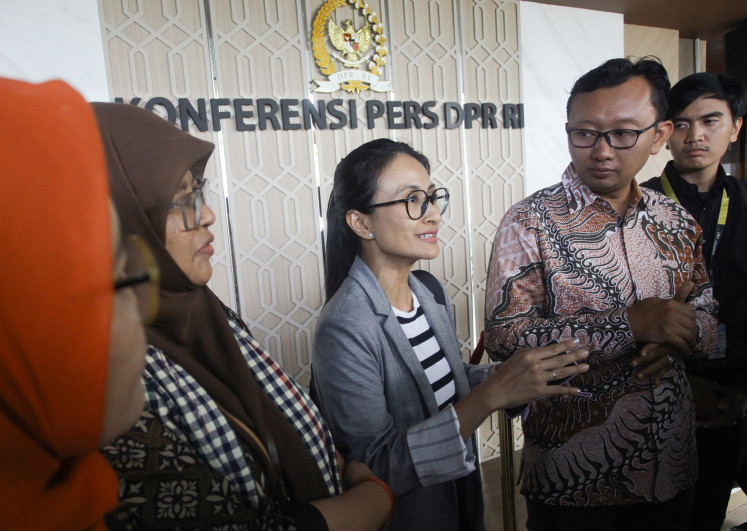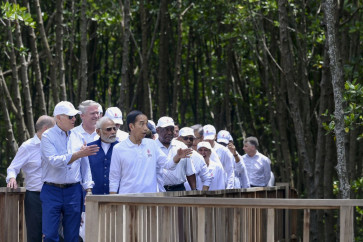Popular Reads
Top Results
Can't find what you're looking for?
View all search resultsPopular Reads
Top Results
Can't find what you're looking for?
View all search resultsCharting a path toward strong blue carbon governance
Existing legal and policy frameworks are yet to provide strong protection of blue carbon ecosystems, as laws still allow for its substitution or replacement.
Change text size
Gift Premium Articles
to Anyone
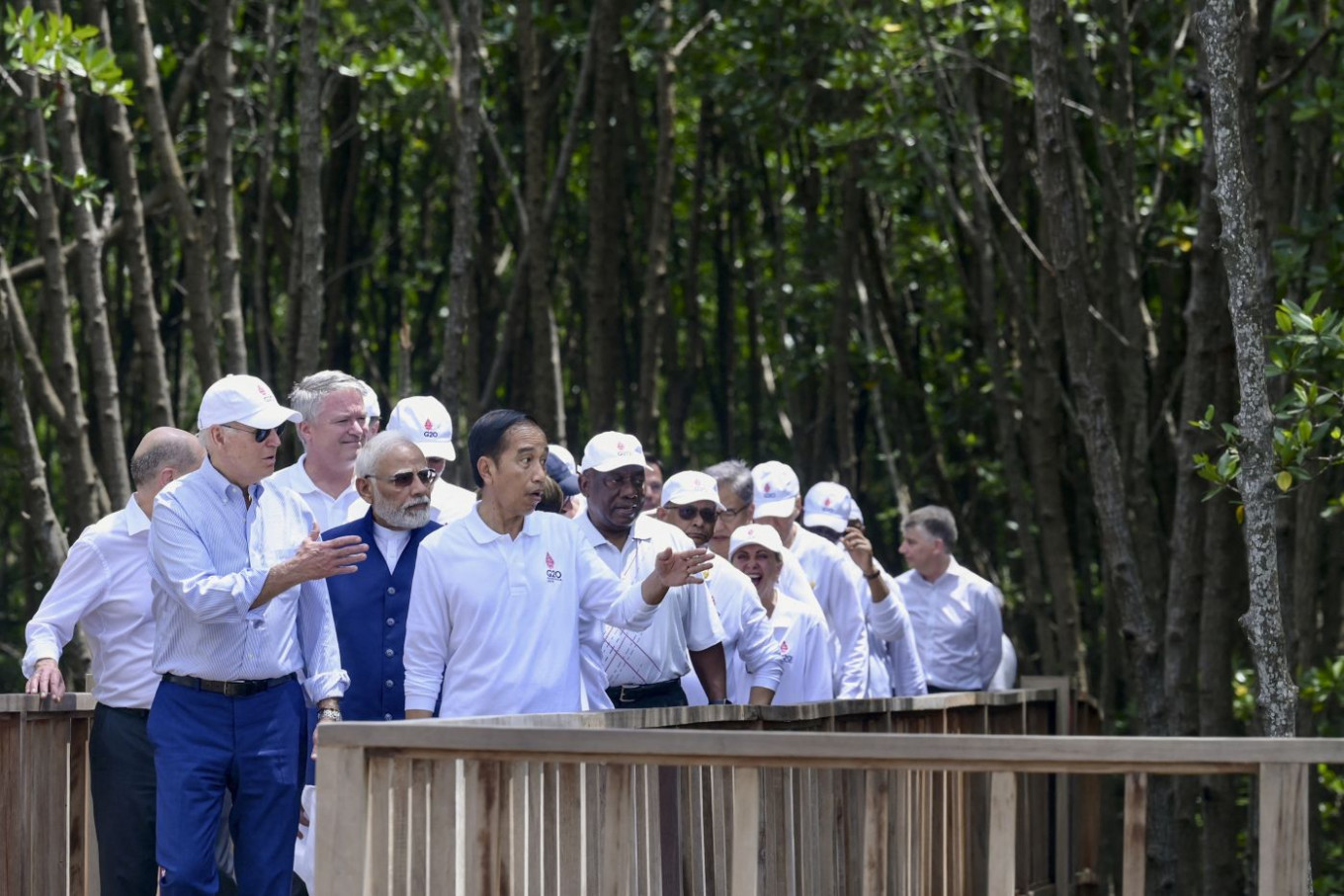 President Joko “Jokowi” Widodo (center) walks with United States President Joe Biden (second left) and Indian Prime Minister Narendra Modi (fourth left) and other leaders through the Taman Hutan Raya Ngurah Rai Mangrove Forest on the sidelines of the Group of 20 Summit meeting in Nusa Dua, Bali, on Nov. 16, 2022. (AFP/Bay Ismoyo/Pool)
President Joko “Jokowi” Widodo (center) walks with United States President Joe Biden (second left) and Indian Prime Minister Narendra Modi (fourth left) and other leaders through the Taman Hutan Raya Ngurah Rai Mangrove Forest on the sidelines of the Group of 20 Summit meeting in Nusa Dua, Bali, on Nov. 16, 2022. (AFP/Bay Ismoyo/Pool)
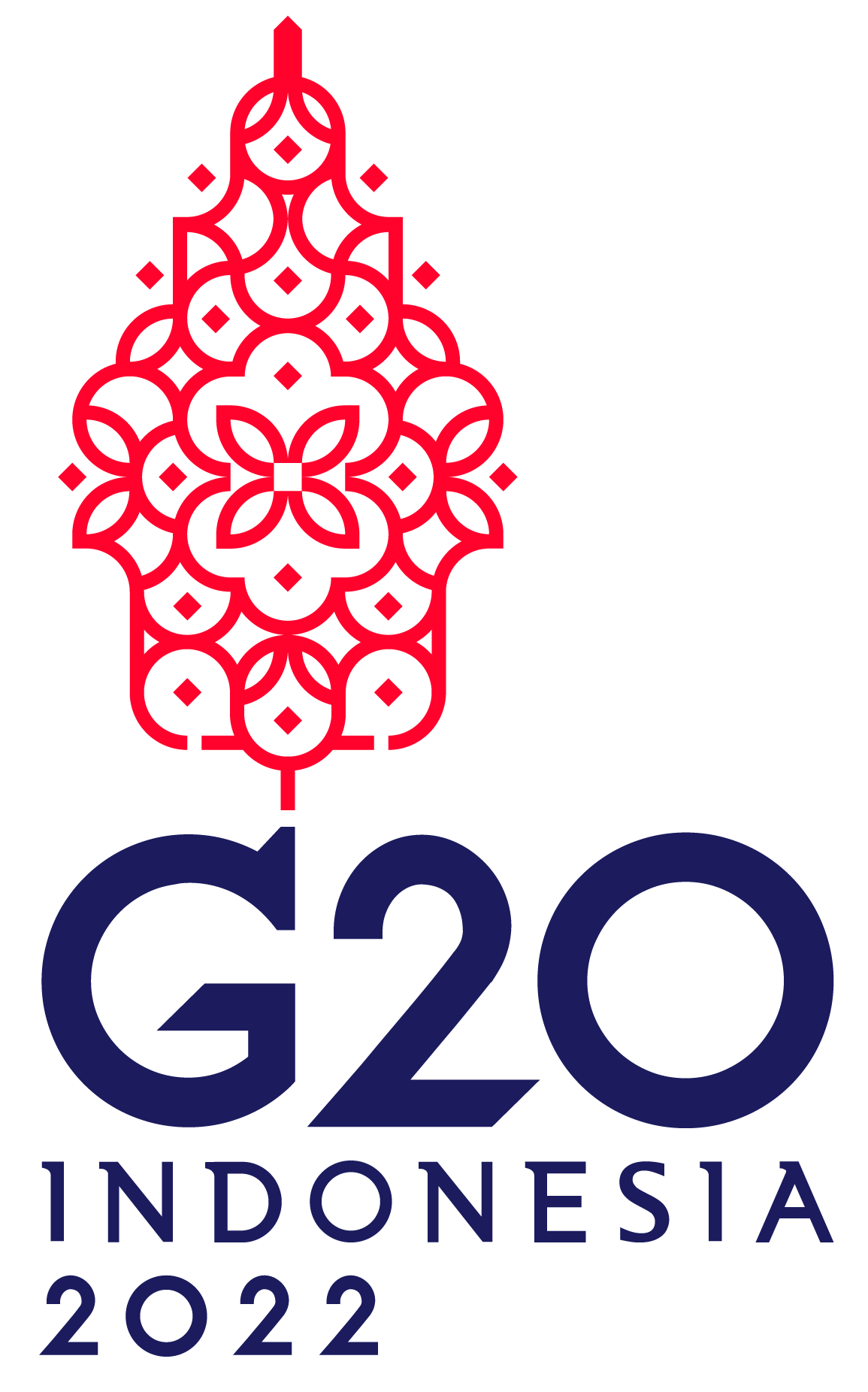
Under Indonesia’s leadership, the Group of 20 meetings in Bali last year resulted in the adoption of the G20 Bali Leader’s Declaration. Article 15 of the declaration affirms the leaders’ commitment to “step up efforts” in halting and reversing biodiversity loss, including through nature-based solutions and ecosystem-based approaches, and also acknowledged mangrove and seagrass roles in climate change mitigation and adaptation.
Mangrove and seagrass, known to be blue carbon ecosystems (BCEs) also provide invaluable benefits to coastal protection, marine biodiversity and livelihood to coastal communities.
Inclusion of BCEs in the declaration was foreseeable as the “mangrove diplomacy” was a landmark of President Joko “Jokowi” Widodo, who took G20 leaders to Ngurah Rai Forest Park (1,300 hectares) to plant mangrove seedlings. This strategy signaled strong commitments to protect the ecosystem, and hoped to inspire other G20 countries where mangrove is prevalent.
Altogether, five G20 countries (Indonesia, Brazil, Australia, India and Mexico) account for 49 percent of mangroves globally, with Indonesia making up one fifth (3.3 million ha). Article 15 of the Bali Declaration should be reinforced in further concrete partnerships and actions under India's G20 current leadership.
In the period of 2009-2019, Indonesia estimated to have lost 18,209 ha of mangroves each year (Arifianti et al., 2021). The highest mangrove deforestation was found mainly in non-forest areas (APLs) or 48.6 percent of total mangrove deforestation, followed by that in production forest (27 percent), protection forests (17 percent) and conservation forest (8 percent) (Arifianti et al., 2021).
There is a silver lining to scale up protection as the pace of global mangrove deforestation is actually slowing considerably (Global Mangrove Alliance, 2022) and the recent data also shows an increase in mangrove expansion in Indonesia since 2019 (National Mangrove Map in 2021).
However, 21 percent of mangroves are still located in APLs (702.798 ha) and 30 percent in production forests (1.001.614 ha). This alarming data calls for urgent policy options to improve protection in APLs and production forest.


